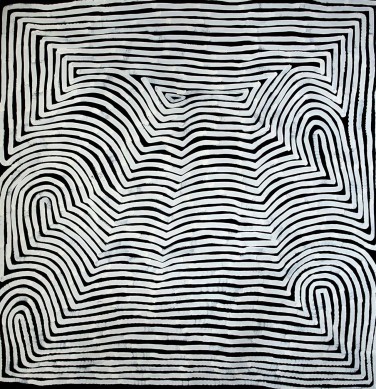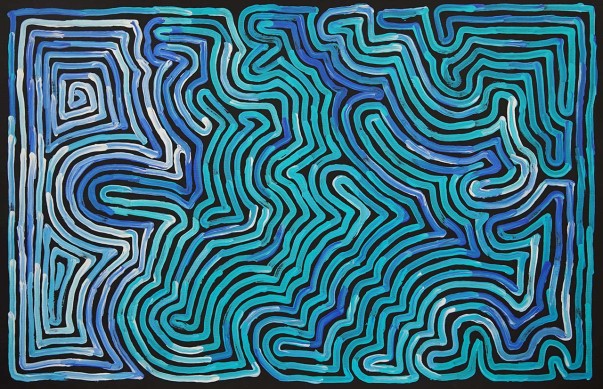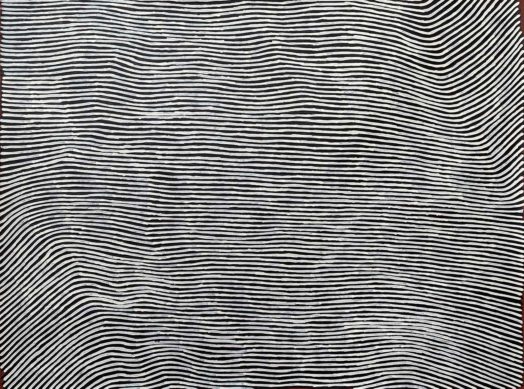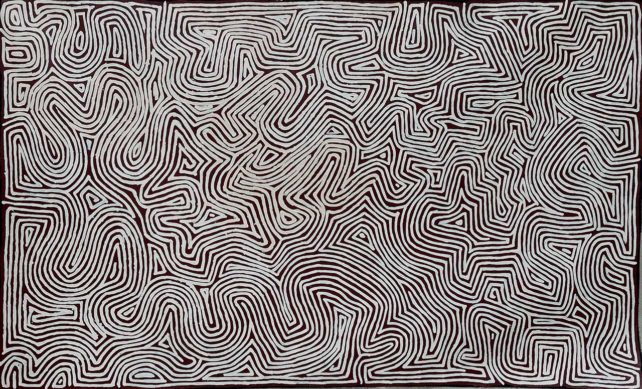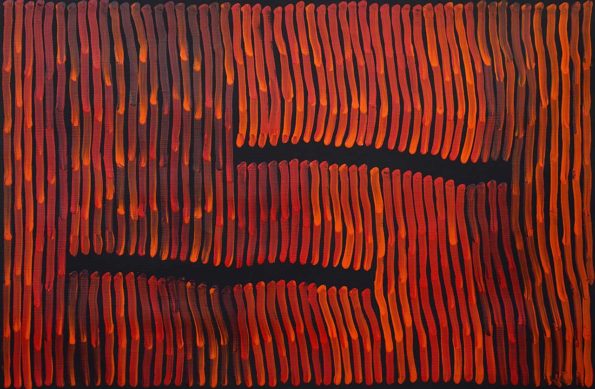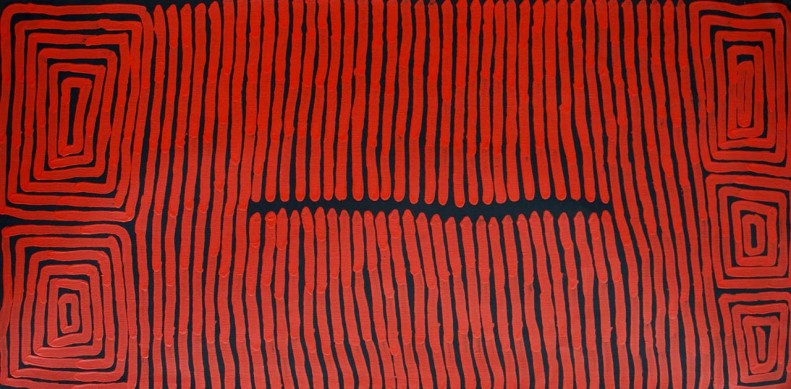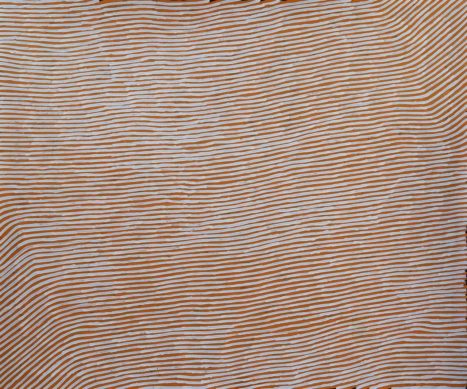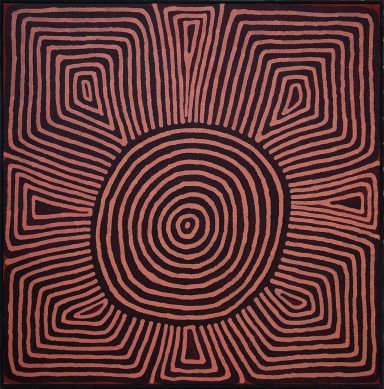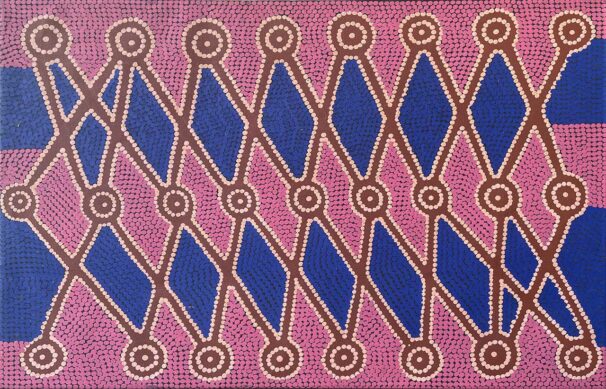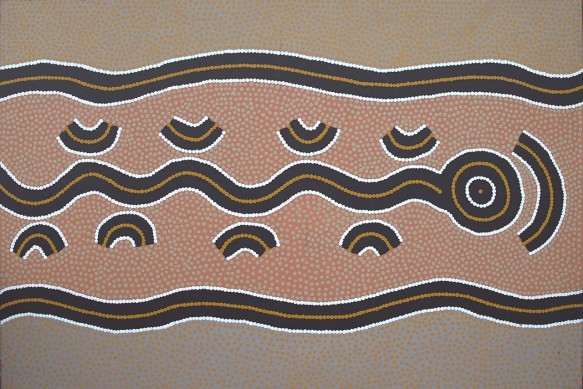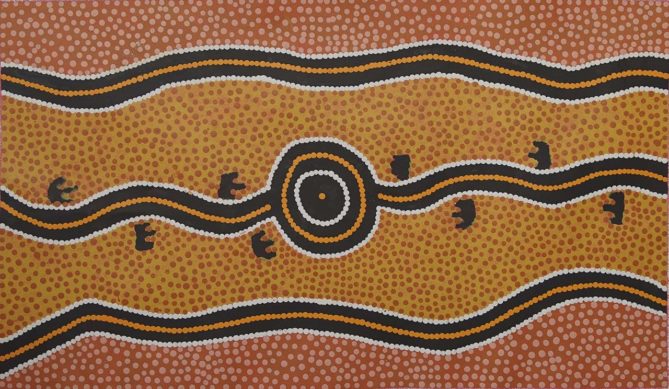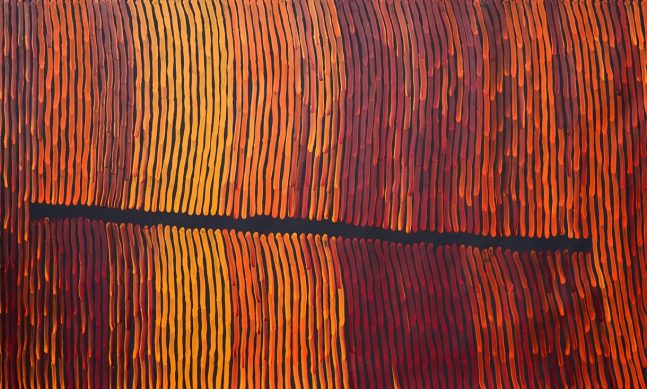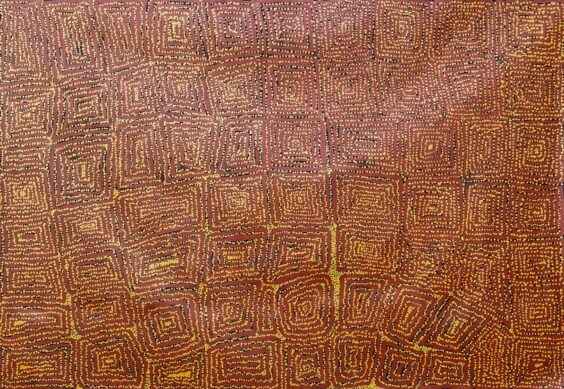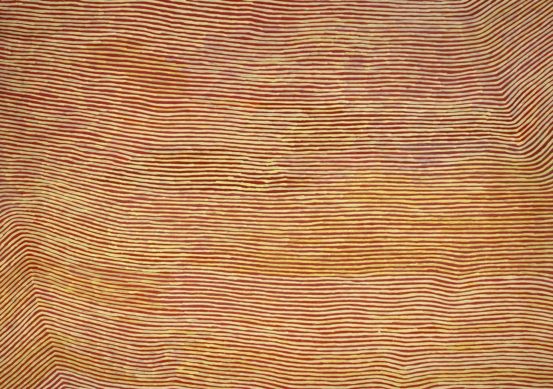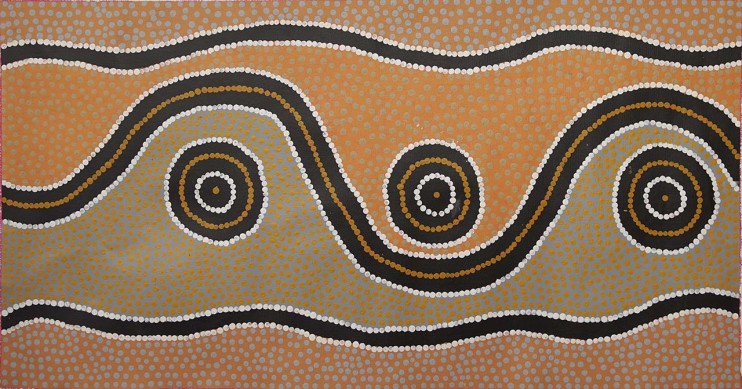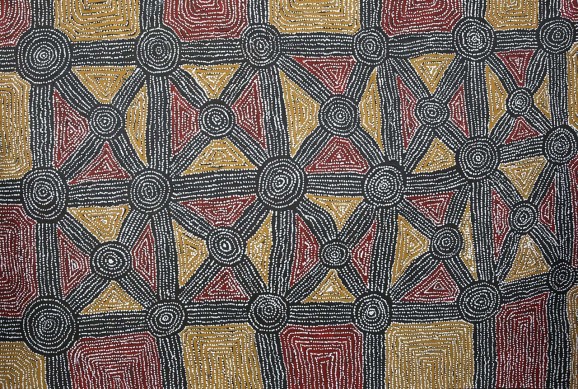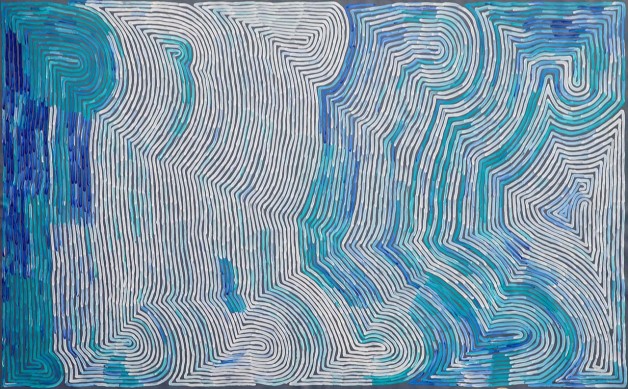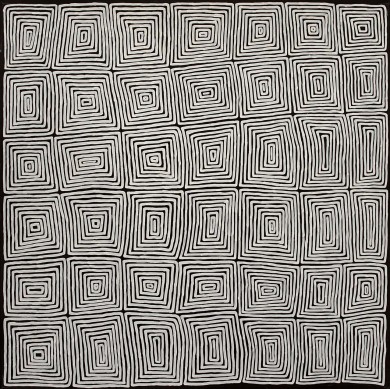Papunya Aboriginal Art
A selection of paintings showing the styles from this Aboriginal art region - some paintings may still be available for sale, while some may have been sold.
Papunya community in the Central Desert is 240km north-west of Alice Springs, and it is here that the Desert Painting movement began in 1971. Aboriginal people from across the Central and Western Deserts were settled in Papunya as part of Australia’s assimilation policy, an attempt to merge one of the world’s oldest living cultures into mainstream Australian society. Papunya settlement was established as an administrative centre for the Aboriginal groups who moved from their traditional lands to the west.
Aboriginal people in 1971 they had only recently won their citizen rights, after a hundred years of western occupation of their desert lands. This era was a difficult time of social upheaval and turmoil, and Aboriginal people needed a means of defining themselves to the seemingly hostile society surrounding them. The Papunya Tula Aboriginal art movement began in 1971 when a school teacher, Geoffrey Bardon, encouraged some of the men to paint a blank school wall. The murals sparked off tremendous interest in the community and soon many men started painting, with the original group of Aboriginal artists successfully establishing their own company in 1972.
Since that time many Pintupi and Luritja people have moved back to their homelands, to the communities of Kintore and Kiwirrkura, and continue their strong ceremonial ties to the land. The Papunya painting style derives directly from the Aboriginal artists’ knowledge of the traditional body and sand painting associated with ceremony. To portray these Tjukurrpa creation stories for public viewing has required the judicious removal of sacred symbols by the artists and the careful monitoring of ancestral designs.
Read more:

